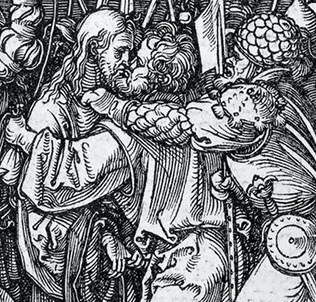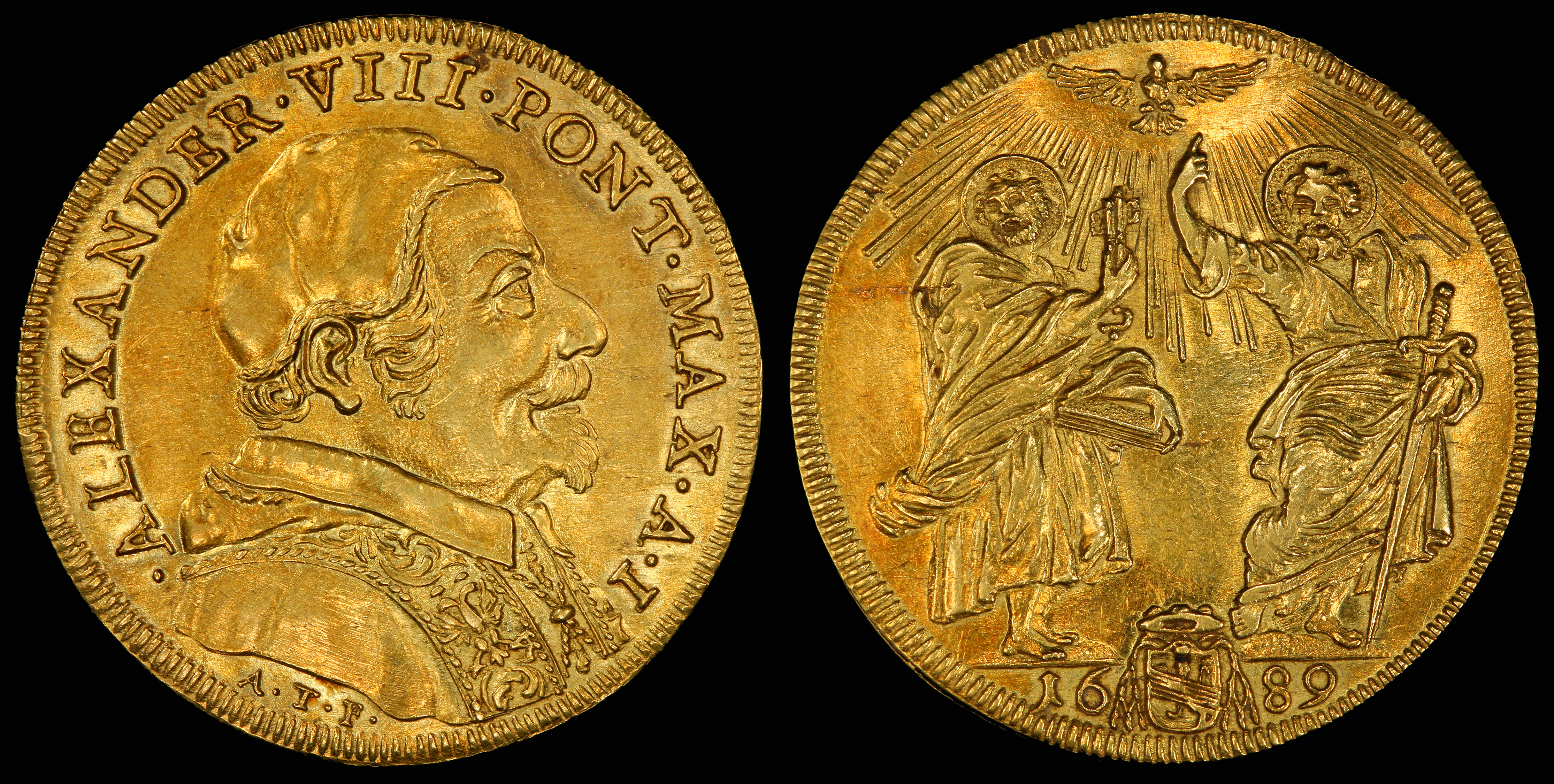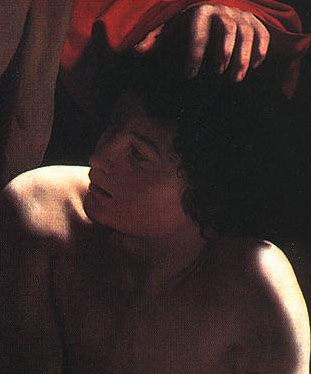|
Ciriaco Mattei
Ciriaco Mattei (died 1614) was an Italian nobleman of Rome and of the House of Mattei and one of the most prolific art collectors of his time. Family Mattei was the son of Alessandro Mattei and Emilia Mazzatosta. He was the brother of Cardinal Girolamo Mattei and Asdrubale Mattei, '' Marquis di Giove'' (an avid art collector himself). He married Giulia Matuzzi, daughter of Pietro Matuzzi and Isabella, an illegitimate daughter of Pope Alexander VI and they had two sons, Giovanni Batista Mattei and Alessandro Mattei. Art collection and residences Mattei and his extended family took up residence at the Palazzo Mattei where they kept portions of their extensive art Collection. He became ''Conservatore di Roma'' and in 1582 he began construction on the Villa Celimontana in Rome. Mattei was a close friend and patron of Michelangelo Merisi da Caravaggio and commissioned a number of works including the ''Supper at Emmaus'', ''John the Baptist (Youth with a Ram)'' and ''The Taking o ... [...More Info...] [...Related Items...] OR: [Wikipedia] [Google] [Baidu] |
Italian Nobility
The nobility of Italy (Italian: ''Nobiltà italiana'') comprised individuals and their families of the Italian Peninsula, and the islands linked with it, recognized by the sovereigns of the Italian city-states since the Middle Ages, and by the kings of Italy after the unification of the region into a single state, the Kingdom of Italy. Nobles had a specific legal status, and held most of the wealth and various privileges denied to other classes, mainly politicians. In most of the former Italian pre-Unification states it was the only class that had access to high-level government positions. They also practically monopolized the most distinguished positions in the city-states and in the Catholic Church for a long time. There were several different systems of nobility over time and in different regions. From the Middle Ages until March 1861, "Italy" was not a single country but was a number of separate kingdoms and other states, with many reigning dynasties. These were often relat ... [...More Info...] [...Related Items...] OR: [Wikipedia] [Google] [Baidu] |
The Taking Of Christ (Caravaggio)
''The Taking of Christ'' ( it, Presa di Cristo nell'orto or Cattura di Cristo) is a painting, of the arrest of Jesus, by the Italian Baroque master Michelangelo Merisi da Caravaggio. Originally commissioned by the Roman nobleman Ciriaco Mattei in 1602, it is housed in the National Gallery of Ireland, Dublin. Description There are seven figures in the painting: from left to right they are John, Jesus, Judas, three soldiers (the one farthest to the right barely visible in the rear), and a man holding a lantern to the scene. They are standing, and only the upper three-quarters of their bodies are depicted. Judas has just kissed Jesus to identify him for the soldiers. The figures are arrayed before a very dark background, in which the setting is obscured. The main light source is not evident in the painting but comes from the upper left; the lesser light source is the lantern held by the man at the right (believed to be a self-portrait of Caravaggio; also, presumably, representing ... [...More Info...] [...Related Items...] OR: [Wikipedia] [Google] [Baidu] |
Date Of Death Unknown
Date or dates may refer to: *Date (fruit), the fruit of the date palm (''Phoenix dactylifera'') Social activity *Dating, a form of courtship involving social activity, with the aim of assessing a potential partner **Group dating *Play date, an appointment for children to get together for a few hours * Meeting, when two or more people come together Chronology * Calendar date, a day on a calendar ** Old Style and New Style dates, from before and after the change from the Julian calendar to the Gregorian calendar ** ISO 8601, an international standard covering date formats *Date (metadata), a representation term to specify a calendar date **DATE command, a system time command for displaying the current date *Chronological dating, attributing to an object or event a date in the past **Radiometric dating, dating materials such as rocks in which trace radioactive impurities were incorporated when they were formed Arts, entertainment and media Music *Date (band), a Swedish dans ... [...More Info...] [...Related Items...] OR: [Wikipedia] [Google] [Baidu] |
Year Of Birth Unknown
A year or annus is the orbital period of a planetary body, for example, the Earth, moving in its orbit around the Sun. Due to the Earth's axial tilt, the course of a year sees the passing of the seasons, marked by change in weather, the hours of daylight, and, consequently, vegetation and soil fertility. In temperate and subpolar regions around the planet, four seasons are generally recognized: spring, summer, autumn and winter. In tropical and subtropical regions, several geographical sectors do not present defined seasons; but in the seasonal tropics, the annual wet and dry seasons are recognized and tracked. A calendar year is an approximation of the number of days of the Earth's orbital period, as counted in a given calendar. The Gregorian calendar, or modern calendar, presents its calendar year to be either a common year of 365 days or a leap year of 366 days, as do the Julian calendars. For the Gregorian calendar, the average length of the calendar year ( ... [...More Info...] [...Related Items...] OR: [Wikipedia] [Google] [Baidu] |
Date Of Birth Unknown
Date or dates may refer to: *Date (fruit), the fruit of the date palm (''Phoenix dactylifera'') Social activity *Dating, a form of courtship involving social activity, with the aim of assessing a potential partner **Group dating *Play date, an appointment for children to get together for a few hours * Meeting, when two or more people come together Chronology * Calendar date, a day on a calendar ** Old Style and New Style dates, from before and after the change from the Julian calendar to the Gregorian calendar ** ISO 8601, an international standard covering date formats *Date (metadata), a representation term to specify a calendar date **DATE command, a system time command for displaying the current date *Chronological dating, attributing to an object or event a date in the past **Radiometric dating, dating materials such as rocks in which trace radioactive impurities were incorporated when they were formed Arts, entertainment and media Music *Date (band), a Swedish dans ... [...More Info...] [...Related Items...] OR: [Wikipedia] [Google] [Baidu] |
Pope Benedict XIV
Pope Benedict XIV ( la, Benedictus XIV; it, Benedetto XIV; 31 March 1675 – 3 May 1758), born Prospero Lorenzo Lambertini, was head of the Catholic Church and ruler of the Papal States from 17 August 1740 to his death in May 1758.Antipope Benedict X, Pope Benedict X (1058–1059) is now considered an antipope. At the time, however, this status was not recognized by church historians, and so the tenth legitimate pontiff by this name is the one who took the official name Pope Benedict XI, Benedict XI (1303–1304). This has advanced the numbering of all subsequent Popes Benedict by one. Popes Benedict XI–XVI are therefore the tenth through fifteenth popes by that name. Perhaps one of the best scholars to sit on the papal throne, yet often overlooked, he promoted scientific learning, the Baroque arts, reinvigoration of Thomism, and the study of the human form. Firmly committed to carrying out the decrees of the Council of Trent and authentic Catholic teaching, Benedict ... [...More Info...] [...Related Items...] OR: [Wikipedia] [Google] [Baidu] |
Villa Mattei
The Villa Celimontana (previously known as Villa Mattei) is a villa on the Caelian Hill in Rome, best known for its gardens. Its grounds cover most of the valley between the Aventine Hill and the Caelian. Location The Villa Celimontana is situated on the summit of the Celian Hill in the south-east of Rome in the Celio (rione of Rome), Rione Celio. The principal entrance is near the Piazza della Navicella, beside the Basilica Santa Maria in Domnica. A secondary entrance is situated on the Clivo di Scauro near the Basilica Santi Giovanni e Paolo, Rome, Santi Giovanni e Paolo. The park is a continuation of Baths of Caracalla. Site Tradition holds that Numa Pompilius met the nymph Egeria (mythology), Egeria on the site, and within the grounds of the present villa, to the left of the present entrance from piazza della Navicella, was the base of the 5th cohort of the Vigiles - these Trajanic-era remains were excavated in 1820, 1931 and 1958. In the mid-16th century the site of the gro ... [...More Info...] [...Related Items...] OR: [Wikipedia] [Google] [Baidu] |
Fee Tail
In English common law, fee tail or entail is a form of trust established by deed or settlement which restricts the sale or inheritance of an estate in real property and prevents the property from being sold, devised by will, or otherwise alienated by the tenant-in-possession, and instead causes it to pass automatically by operation of law to an heir determined by the settlement deed. The term ''fee tail'' is from Medieval Latin , which means "cut(-short) fee" and is in contrast to "fee simple" where no such restriction exists and where the possessor has an absolute title (although subject to the allodial title of the monarch) in the property which he can bequeath or otherwise dispose of as he wishes. Equivalent legal concepts exist or formerly existed in many other European countries and elsewhere. Purpose The fee tail allowed a patriarch to perpetuate his blood-line, family-name, honour and armorials in the persons of a series of powerful and wealthy male descendants. By kee ... [...More Info...] [...Related Items...] OR: [Wikipedia] [Google] [Baidu] |
Will (law)
A will or testament is a legal document that expresses a person's (testator) wishes as to how their property ( estate) is to be distributed after their death and as to which person ( executor) is to manage the property until its final distribution. For the distribution (devolution) of property not determined by a will, see inheritance and intestacy. Though it has at times been thought that a "will" historically applied only to real property while "testament" applied only to personal property (thus giving rise to the popular title of the document as "last will and testament"), the historical records show that the terms have been used interchangeably. Thus, the word "will" validly applies to both personal and real property. A will may also create a testamentary trust that is effective only after the death of the testator. History Throughout most of the world, the disposition of a dead person's estate has been a matter of social custom. According to Plutarch, the written will was ... [...More Info...] [...Related Items...] OR: [Wikipedia] [Google] [Baidu] |
Domenico Fiasella
Domenico Fiasella (12 August 1589 – 19 October 1669) was an Italian painter of the Baroque period, mainly active in Genoa. He was nicknamed ''Il Sarzana'', after his birthplace. Biography He was born in c, the son of Giovanni Fiasella, a silversmith, who, noting his skills apprenticed him as a boy of 11 years to work with Aurelio Lomi in Genoa, and from there he moved to work with Giovanni Battista Paggi. Around 1607 he left for Rome, where he frequented the ''Accademia del Nudo''. His ability was first recognized by Guido Reni and Ciriaco Mattei, which led Domenico Passignano and Cavalier D'Arpino to employ him. The Marchese Vincenzo Giustiniani commissioned paintings from him, including ''Christ Healing the Blind'' and ''Christ Raising the Son of the Widow of Nain'' (both of which were ultimately purchased by John Ringling and bequeathed to the John and Mable Ringling Museum of Art upon his death). During his stay in Rome, he also completed ''The Flight into Egypt'' (now in ... [...More Info...] [...Related Items...] OR: [Wikipedia] [Google] [Baidu] |
Scudi
The ''scudo'' (pl. ''scudi'') was the name for a number of coins used in various states in the Italian peninsula until the 19th century. The name, like that of the French écu and the Spanish and Portuguese escudo, was derived from the Latin ''scutum'' ("shield"). From the 16th century,Klütz: ''Münznamen...'' the name was used in Italy for large silver coins. Sizes varied depending on the issuing country. The first ''scudo d'argento'' (silver shield) was issued in 1551 by Charles V (1519–1556) in Milan. Under Maria Theresa and Joseph II the ''scudo d'argento'' had a weight of 23.10 g and a fineness of 896/1000. In the Kingdom of Lombardy–Venetia (under the control of the Habsburg Austrian Empire), the Lombardy–Venetia scudo was equivalent to the Conventionsthaler and was subdivided into six '' lire''. Before the Napoleonic Wars, the lira was subdivided into 20 ''soldi'', each of 12 ''denari''. Later, the lira was made up of 100 ''centesimi''. When Austria-Hungary deci ... [...More Info...] [...Related Items...] OR: [Wikipedia] [Google] [Baidu] |
John The Baptist (Caravaggio)
''John the Baptist'' (sometimes called ''John in the Wilderness'') was the subject of at least eight paintings by the Italian Baroque artist Michelangelo Merisi da Caravaggio (1571–1610). The story of John the Baptist is told in the Gospels. John was the cousin of Jesus, and his calling was to prepare the way for the coming of the Messiah. He lived in the wilderness of Judea between Jerusalem and the Dead Sea, "his raiment of camel's hair, and a leather girdle about his loins; and his meat was locusts and wild honey." He baptised Jesus in the Jordan, and was eventually killed by Herod Antipas when he called upon the king to reform his evil ways. John was frequently shown in Christian art, identifiable by his bowl, reed cross, camel's skin and lamb. The most popular scene prior to the Counter-Reformation was of John's baptism of Jesus, or else the infant Baptist together with the infant Jesus and Mary his mother, frequently supplemented by the Baptist's own mother St Elizabeth ... [...More Info...] [...Related Items...] OR: [Wikipedia] [Google] [Baidu] |







